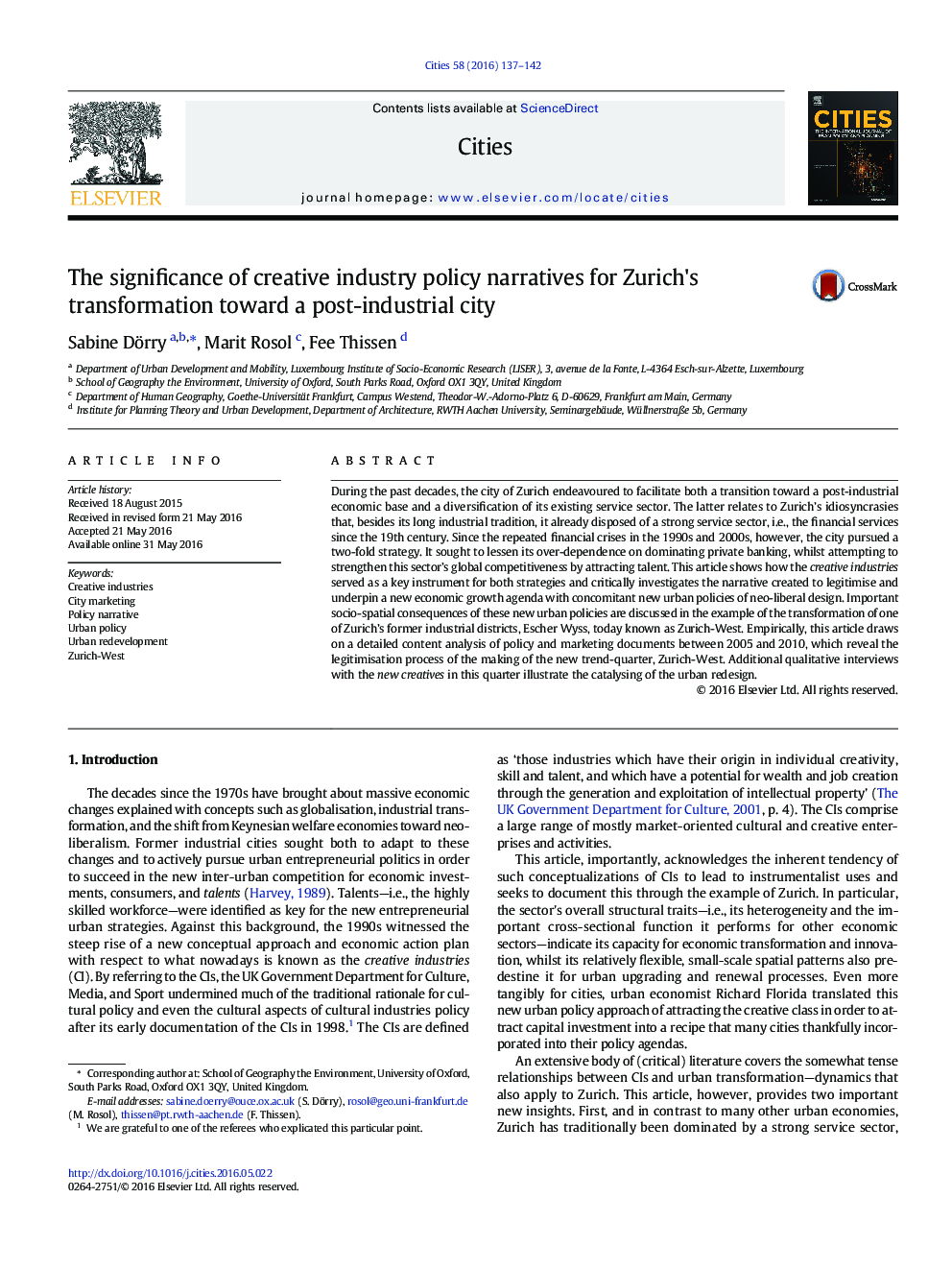| Article ID | Journal | Published Year | Pages | File Type |
|---|---|---|---|---|
| 7417977 | Cities | 2016 | 6 Pages |
Abstract
During the past decades, the city of Zurich endeavoured to facilitate both a transition toward a post-industrial economic base and a diversification of its existing service sector. The latter relates to Zurich's idiosyncrasies that, besides its long industrial tradition, it already disposed of a strong service sector, i.e., the financial services since the 19th century. Since the repeated financial crises in the 1990s and 2000s, however, the city pursued a two-fold strategy. It sought to lessen its over-dependence on dominating private banking, whilst attempting to strengthen this sector's global competitiveness by attracting talent. This article shows how the creative industries served as a key instrument for both strategies and critically investigates the narrative created to legitimise and underpin a new economic growth agenda with concomitant new urban policies of neo-liberal design. Important socio-spatial consequences of these new urban policies are discussed in the example of the transformation of one of Zurich's former industrial districts, Escher Wyss, today known as Zurich-West. Empirically, this article draws on a detailed content analysis of policy and marketing documents between 2005 and 2010, which reveal the legitimisation process of the making of the new trend-quarter, Zurich-West. Additional qualitative interviews with the new creatives in this quarter illustrate the catalysing of the urban redesign.
Related Topics
Social Sciences and Humanities
Business, Management and Accounting
Tourism, Leisure and Hospitality Management
Authors
Sabine Dörry, Marit Rosol, Fee Thissen,
